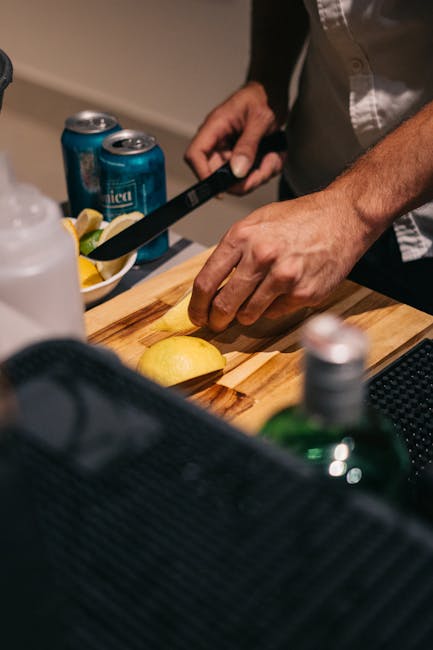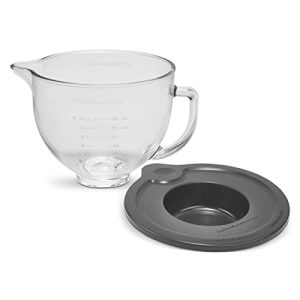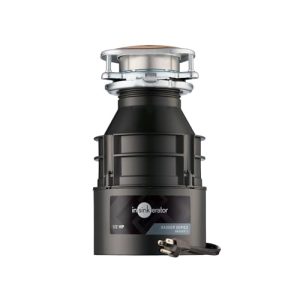Are you planning to travel with your favorite kitchen knife but unsure if you can pack it in your checked luggage? This question might seem simple, but the answer can save you from unexpected hassles at the airport.
You don’t want your trip to start with delays, confiscations, or even fines. Keep reading to find out exactly what the rules are, how to pack your knife safely, and what you need to know to avoid trouble. Your kitchen knife is important, and handling it the right way when flying can make all the difference.
Airline Policies On Knives
Knowing airline policies on knives is crucial before packing your kitchen knife in checked luggage. Rules vary and ignoring them can lead to confiscation or fines. Understanding these policies saves you time and stress at the airport.
Variations Across Airlines
Each airline has its own rules about carrying knives in checked bags. Some airlines allow kitchen knives as long as they are properly sheathed and secured. Others may have strict size limits or completely ban certain types of blades.
For example, a friend once flew with a chef’s knife packed in a hard case, and the airline accepted it without issues. Meanwhile, another traveler had a similar knife confiscated because their airline prohibited blades over a certain length. Always check the airline’s official website before you pack.
- Some airlines require knives to be wrapped or sheathed
- Others ask that knives be declared at check-in
- Sharpness and length restrictions vary widely
Domestic Vs International Flights
Policies can differ between domestic and international flights. Domestic flights may have more lenient rules, but international flights often follow stricter security regulations set by multiple countries.
Traveling internationally means you must comply with the laws of both the departing and arriving countries. This can affect whether your kitchen knife is allowed. Have you checked the customs rules of your destination?
Keep in mind, even if your domestic airline allows knives, the international airport or destination country might not. To avoid surprises, research the entire route. This prevents your knife from being held up or confiscated abroad.
Airport Security Regulations
Airport security rules control what items travelers can carry on planes. These regulations keep everyone safe during flights. Knives, including kitchen knives, often face strict restrictions. Understanding these rules helps avoid problems at the airport. Different countries have different policies for checked luggage.
Tsa Guidelines In The Us
The Transportation Security Administration (TSA) allows kitchen knives in checked baggage. Carrying knives in carry-on bags is not allowed. Knives must be sheathed or wrapped to prevent injury. Loose blades can cause delays or confiscation. TSA may inspect bags to ensure compliance. Sharp objects are strictly prohibited in the cabin area.
Security Rules In Other Countries
Airport security rules vary worldwide. Some countries follow rules similar to the TSA. Others may ban knives completely from checked luggage. Always check the destination’s airport security policies before travel. Some airports require special packing or declaration of sharp items. Ignoring local rules can lead to fines or confiscation.
Packing Knives Safely
Packing knives safely is essential when traveling with checked luggage. You want to protect both your knives and the baggage handlers who come into contact with your bags. Taking a few extra steps can prevent damage and avoid any airport security issues.
Proper Wrapping Techniques
Wrap your knives carefully to keep the blades from cutting through your luggage or injuring anyone. Use thick materials like bubble wrap, kitchen towels, or even layers of clothing to cover the blade completely.
Secure the wrapping with tape or rubber bands to prevent it from unraveling during transit. Make sure the blade is fully covered and the handle is accessible for easier handling.
Have you ever seen a knife slice through your suitcase lining? That’s exactly what you want to avoid by wrapping each knife individually and firmly.
Using Protective Cases
A hard or soft knife case offers an extra layer of protection beyond wrapping. Cases made of plastic, wood, or reinforced fabric shield the blade and reduce the risk of injury.
If you don’t have a dedicated knife case, consider using a sturdy sheath or even a thick cardboard sleeve as a temporary solution. The goal is to keep the blade stable and covered.
Think about your last trip—did your knife rattle around inside your luggage? A protective case keeps it snug and prevents damage to both the knife and your other belongings.
Legal Restrictions And Fines
Traveling with kitchen knives in checked luggage requires careful attention to legal rules. Airlines and governments set strict laws about carrying knives on planes. Ignoring these rules can lead to serious trouble. Knowing the legal restrictions helps avoid fines and confiscation of your knife. Always check the rules before packing sharp objects in your luggage.
Prohibited Knife Types
Not all knives are allowed in checked bags. Some knives are banned due to their design or size. These usually include:
- Switchblades or automatic knives
- Knives with blades longer than a certain length
- Butterfly knives
- Knives with concealed blades
- Knives considered weapons by local laws
Kitchen knives with very long blades may be restricted. Airlines also have their own rules on what is allowed.
Consequences Of Non-compliance
Failing to follow knife rules can cause problems. Airport security may confiscate your knife. In some cases, you could face fines. Authorities can delay your travel or refuse boarding. Serious violations may lead to legal action. Fines vary by country and can be high. Always pack knives safely and declare them if required.
Alternatives To Carrying Knives
Kitchen knives can be packed in checked luggage, but some travelers prefer safer alternatives. Compact scissors or multi-tools often replace bulky knives during flights. These items are easier to carry and comply with airline rules.
When planning your travels, the question of whether to pack kitchen knives in your checked luggage often arises. Instead of navigating through complex airline regulations, there are smarter alternatives to consider. These options not only save you from potential hassles at airport security but also offer practical solutions for your culinary needs once you reach your destination.Buying Knives At Destination
Purchasing knives upon arrival can be a convenient option. Local markets or stores often offer a variety of kitchen knives at reasonable prices, allowing you to find tools that suit your cooking style. Plus, this approach gives you a chance to explore local craftsmanship, which can be a delightful experience in itself. Think about it: wouldn’t it be exciting to use a knife crafted by local artisans, adding a unique touch to your cooking? Moreover, this method means you won’t have to worry about packing them for your return trip, as you can consider them a part of your travel souvenirs.Shipping Knives Separately
Shipping knives to your destination is another viable option. Many courier services offer reliable and safe delivery options for such items. This way, you can ensure your knives arrive safely and are ready for use once you reach your destination. Have you ever thought about the peace of mind this could bring? Not having to worry about potential damage or loss during transit can be a relief. Simply arrange for the knives to be shipped a few days before your departure, and they’ll be waiting for you when you arrive. Choosing to ship knives not only ensures their safety but also provides you with the convenience of traveling light.Tips For Travelers
Traveling with kitchen knives in your checked luggage can be tricky. Knowing the right steps can save you from delays or confiscations at the airport. Here are practical tips to help you navigate this process smoothly.
Informing Airline Staff
Always tell the airline staff about your kitchen knives when checking in. This transparency helps avoid surprises and ensures your items are handled properly. Airlines might have specific packing or declaration requirements that you need to follow.
I once traveled with a chef’s knife for a cooking competition. Not informing the staff led to a lengthy security check and almost missed my flight. Sharing this info upfront could have saved me time and stress.
Checking Updated Regulations
Airport security rules change frequently. Before you pack your knives, check the latest regulations from your departure and destination airports. Some countries allow knives in checked baggage under certain conditions, while others have strict bans.
Use official government or airline websites for the most accurate info. This simple step helps you avoid surprises and ensures compliance with current laws.
Frequently Asked Questions
Can You Pack Kitchen Knives In Checked Baggage?
Yes, kitchen knives are allowed in checked luggage. They must be securely wrapped or sheathed to prevent injury. Always check airline policies for specific rules.
Are Kitchen Knives Prohibited In Carry-on Bags?
Yes, kitchen knives are not allowed in carry-on luggage due to security risks. They must be packed in checked bags.
How Should Kitchen Knives Be Packed For Flights?
Wrap knives securely in a sheath or blade guard. Place them in the center of your checked luggage to avoid damage or injury.
Do All Airlines Allow Kitchen Knives In Checked Luggage?
Most airlines permit kitchen knives in checked baggage if packed safely. However, always verify specific airline and TSA regulations before traveling.
Conclusion
Packing a kitchen knife in checked luggage is allowed with care. Always wrap the knife securely to avoid injury and damage. Follow airline rules and local laws to stay safe. Inform the airline if needed to prevent issues at the airport.
Taking these steps makes travel smoother and stress-free. Keep your knife safe and travel smart.

Sophie Hartwell is the founder of KitchenQuik.com, where she shares kitchen tips, smart cooking hacks, and the best product picks to make everyday cooking easier and more enjoyable.




